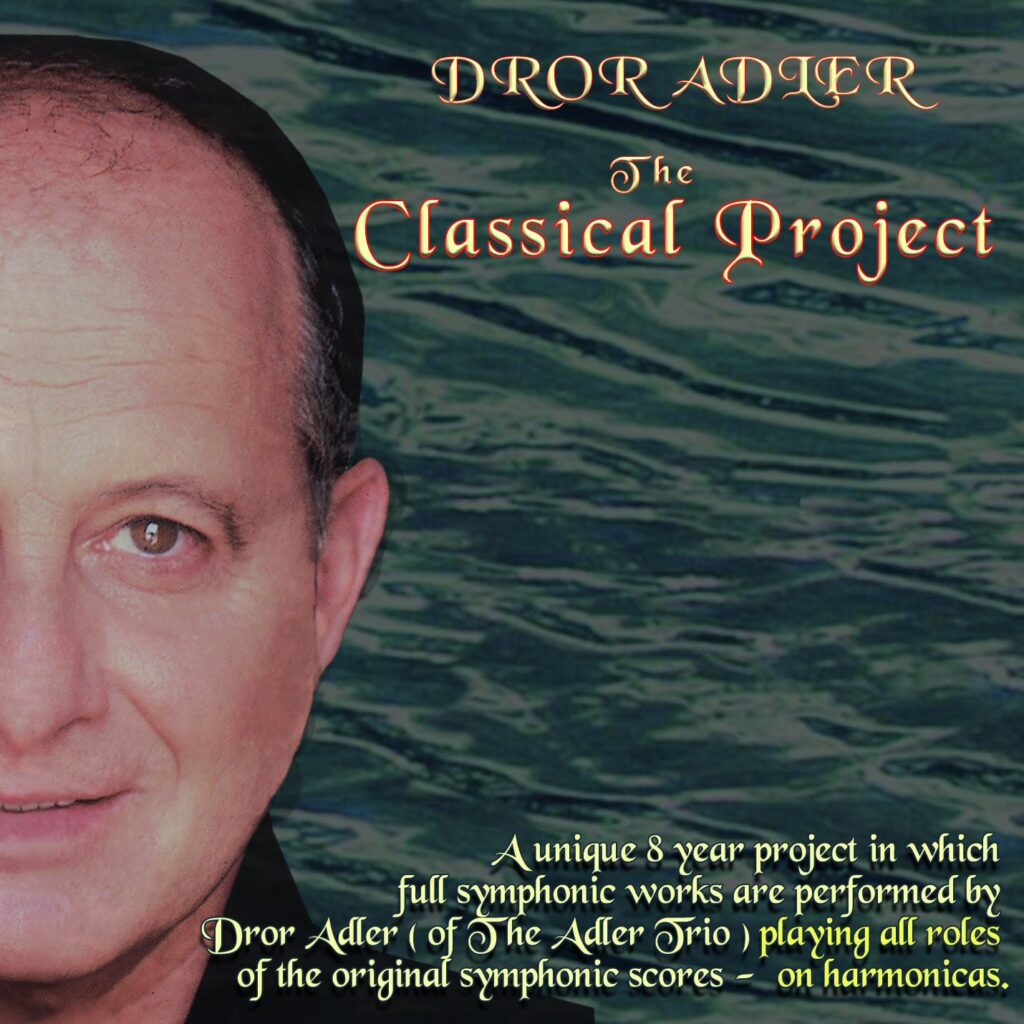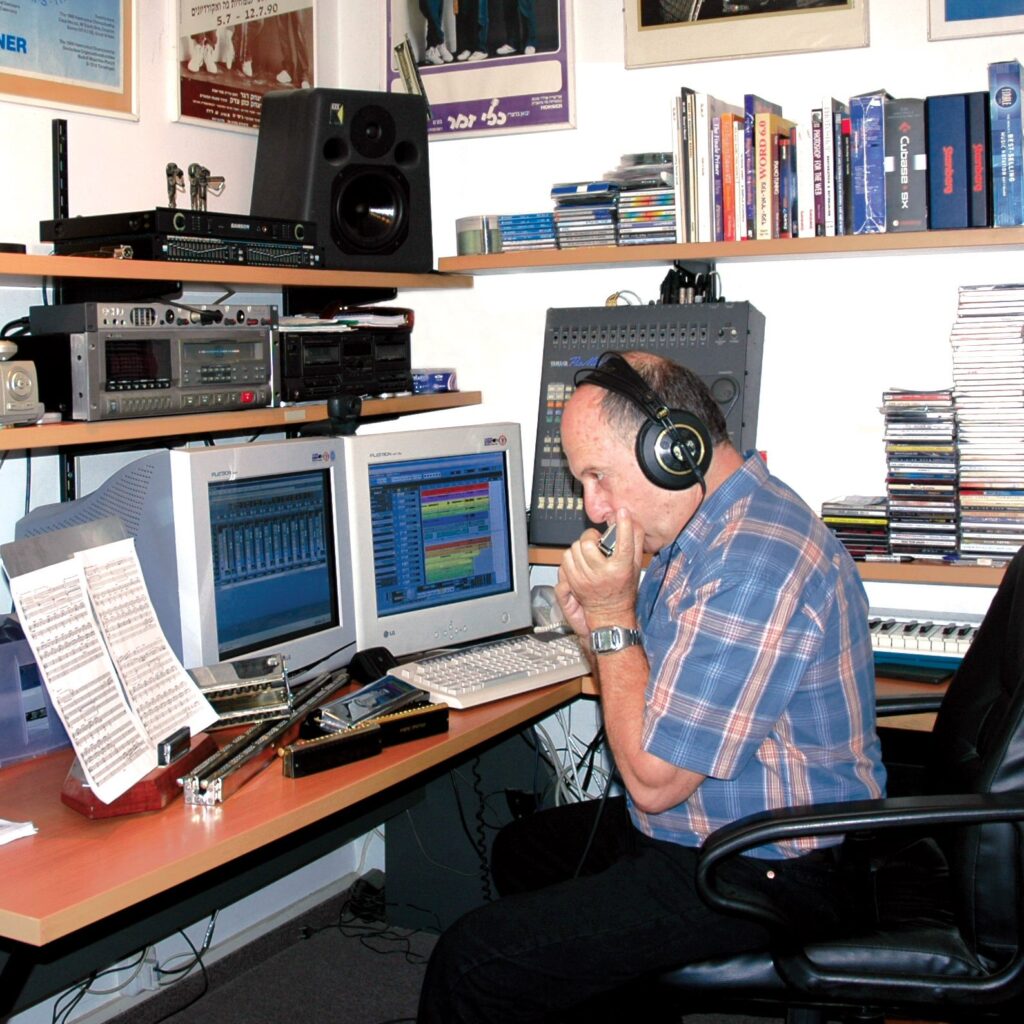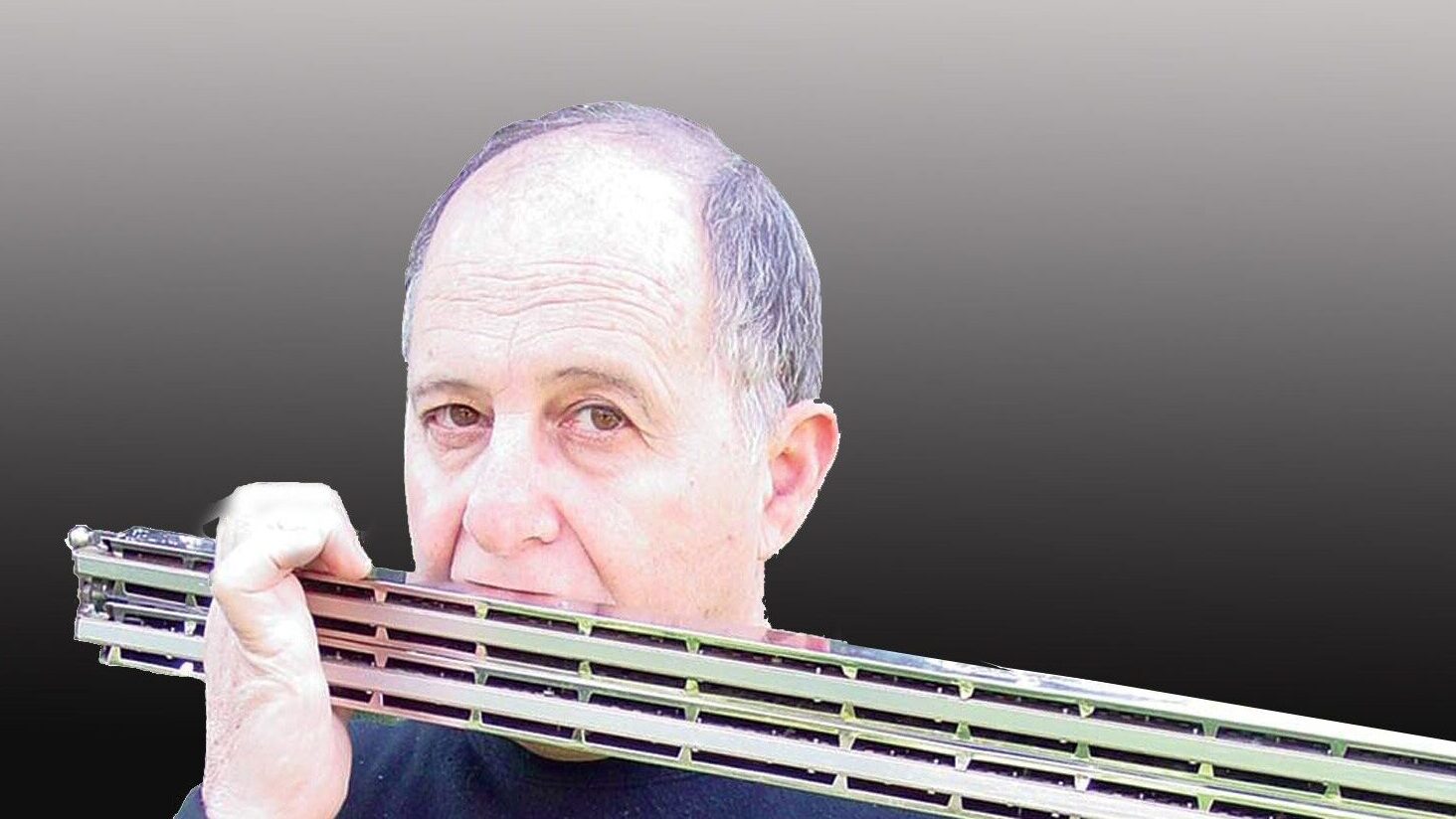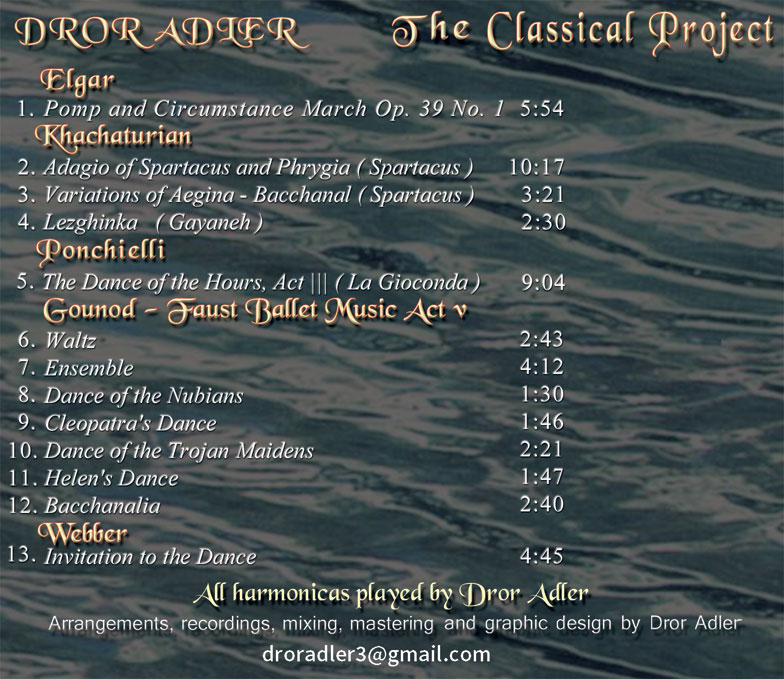The First Harmonica Jazz Player – by Art M. Daane
The Beginning.

Max Geldray was born Max van Gelder in Amsterdam in 1916. It was not until 1932 that he first saw a chromatic harmonica; the shop owner offered it to him when he was taking refuge from a torrential rainstorm in his shop.
By 1934 Max had become a star on national radio and on two occasions he was asked to change his name. Max van Gelder was too Dutch. After listening to the Borrah Minevitch Harmonica Rascals and watching them on the screen, it occurred to him that harmonica bands would be the thing of the future.
The Bands.
In those days harmonica players were far from, and yet he found seven other harmonica players of his own age. When they found an agent they were soon told that a name had to be found the “Max van Gelder Harmonica Band” was too amatuerish, and too Dutch.
They soon became “Mac Geldray and his Mouth-Accordeon Band”. Max gave in but re-named himself Max at a later occasion.
The showbusiness didn’t pay very well and four members quit the band and returned to a more seriously way of life. The remaining four, Henk Lodema, Geert van Driesten, Rob Lodema and Max himself began taking it more serious and were engaged to tour Great Britain. Tom Moss, a very popular English comedian, was in Amsterdam for a few weeks seeking entertainers for his vaudeville show. He renamed their act. They became “The Hollander Boys”.
Their tour was a success, but after returning to the Continent again, they could not find work. Max had taken a fancy to travelling, and made plans to go to Brussels to see if he could get any bookings. The other three weren’t as enthusiastic as he, and told him to go by himself.
The Jazzplayer.
Brussels wasn’t actually waiting for a Dutch harmonica player, and after a couple of weeks Max started to get desperate for work. It was at the “Le Boeuf sur la Toit” that Max was allowed to play a piece with the house orchestra. At the end of the song the public broke down the house, and he was offered a job as a Jazz Harmonica Player, which lasted over a year.
A boyhood friend, Johnny Fresco, came to see Max at the “Bull on the Roof” the English translation of “Le Boeuf sur la Toit”. Johnny had formed a successful danceband, and offered him a job with his band in a dance palace in The Hague. It was the first time that he played in front of a Dutch audience, and this was also the first time he ever performed in front of his father, who seemed happy to see his son on stage.
Because of the warm family atmosphere, the time in The Hague was very memorable to Max but he was pleased to hear from Johnny that he had another engagement in Ostend, Belgium. This would be a nice working holiday and an investment in his future as the Ostend Casino was just across the road from where they were playing. The Casino was the place where aristocracy, industrialists and other rich people of Europe came gambling. The Casino also hosted great artist like Coleman Hawkins, Teddy Stauffer from Switzerland, Jo Bouillon from France and Ambrose and his orchestra from England.
It wasn’t the fame Max was looking for but the players in the groups. He was learning so much so fast that he felt like a real jazzman. Non of the musicians ever looked down on him because he played the harmonica and became good friends.
The Paris Connection.
It was during his stay in Ostend that Max met Ray Ventura. Ray told him that whenever he would come to Paris he would set him up with a place to live. Ray kept his promise and Max became a full member of the “Ray Ventura Orchestra” untill the second world war broke out.
It was early in 1938 when Max met Django Reinhardt at the “Hot Club de France”, Django had already heard about Max. There were about six musicians playing some light melodic jazz and after about 15 minutes Max was asked to join in. The friendship with Django lasted till early 1940 when Max fled to England. He was jewish and didn’t like the idea of falling into the hands of the Nazis. The fact that Holland was a neutral country made it easier for him to leave.
The Soldier.
The vessel that took him across the channel docked in Liverpool but it wasn’t untill The 20th of September of that year that he was introduced to the Royal Dutch Army Brigade “Prinses Irene”, and was send off to camp. By 1942 Max had become very popular by the people at the BBC, and Max’s harmonica was on radio very often in wartime Britain. It was on Princess Elizabeth’s sixteenth birthday that Max and his friend, pianist Ben de Koning, were part of the entertainment to the Princess’s party. At no lesser place than Windsor Castle.
Max was wounded during the landing at Normandy, 4 months later he set foot again in Brussel, but had to wait untill May 1945 to go Amsterdam where he was unable to find his family. Sadly, both his parents and younger sister had been killed by the Nazis. Having nothing to stay in Amsterdam for he went back to Ray Ventura for two years before returning to England.
The Goons.
Max [The Conk] was a member of the Goons from start to finish. The show was first called “Crazy People” in May 1951 and re- named “The Goon Show” in November 1952. The end came on the 28th of January 1960. During those years he acclaimed International recognition. He was invited by the Austrlian Broadcasting authorities to appear on a Nation-wide television show in 1961, On his way back to England he made a stop- over in Hawaii and Los Angeles where he looked up his old friend Johnny Fresco and some other musicians he had known in Europe, most of them had become studio musicians. This wasn’t what he was looking for and returned to England.
The change in his life.
He had only be back in England a few days when he had another job offer, this time as an entertainer on board the Queen Elizabeth. Four crossings later Max decided to pack his bags and take a one-way ticket to Los Angeles, not because it was the place to be for a musician, but because of old friends. His first booking was in Reno, Nevada, where he had some marvellous opportunities, working with Sarah Vaughan, Dinah Shore, Billy Daniels and many more others. He didn’t feel at ease in Reno though and went back to L.A., where he landed a job in a local bar as a harmonica player.
He was longing to settle down permenantly and met Suzan, a small, gentle and pretty mother of three just at the right time. She was divorced, just like him. It was only a matter of weeks before he proposed to her, and soon after the five of them moved into a small bungalow in the San Fernando Valley. Max got a steady job in a department store as a clothing salesman. Two years later Philip was born; he was a gift from heaven for Max and Susan, and adored by the other kids.
Two years after they moved to Boston, Massachusetts, where Max worked for the the “Christian Science Monitor” as a regional sales supervisor. They missed the warmth of California and decided to return there. While in the midst of planning their move back to L.A., a letter from England arrived. They were going on a short trip to England first.
The very last Goon Show.
During all the years that he had been away from England, Max had kept contact with Peter, Spike and Harry and often saw Peter when he was in Hollywood. The Goons had never lost track of each other. The reason for the Goon Show reunion was the fact that the B.B.C radio was to celebrate their 50th anniversary. Max, Susan and Philip arrived just one day before the production in London. Everyone had arrived except Wally Stott, the musical arranger from the beginning who declined for personal reasons.
The Final Chapter.
After returning home from England it would take another seven years before they returned to L.A. Max and his family often visited Palm Springs where Susan’s relatives lived. By April 1973 her father became ill and they decided to move to Palm Springs to take care of her dad. Max had found himself a job in the “Trinidad Bar”, hardly a name for a place that featured jazz. One evening he was approached by a man who introduced himself as Doctor Hirshleifer. He told him that he was a jazz fan, and that he had founded the “Stroke Center” in Palm Springs. He asked Max to volunteer to put up a show for the patients, and this he did just one week later. Max returned every week, much to the pleasure of the patients. They formed a group and called themselves “The Blow Hards”. A wonderful co-operation that lasted nine years! The combination of taking care of her father and their son Timmy, who tragically died after being very ill for a year, took their toll of Suzan who eventually was treated at the “Betty Ford Center” in Rancho Mirage, California. Max immediately volunteered his services, and after a short period of volunteer work he joined the staff full time. Considering the hand of cards dealt him by fate. He is a truly remarkable man, and an example to us all. Let’s take a few minutes silence to pay homage to this great man.
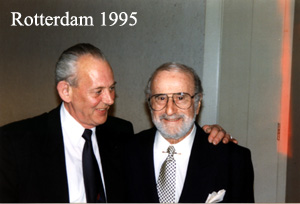
When he visited me in September 1995, for the Dutch Harmonica Festival in Rotterdam, he was still working full time.
Early 1996 Max was advised by his physician to stop working. At the age of 80 he still found it difficult not to go to the Betty Ford Center daily.
Max was still playing in 2002, but 2002 had not been a good year as it slowed him down quite a bit. But he’s on the mend.But as of November, at least, all the maladies had been cured and Max was just trying to regain his former strength, something that doesn’t happen quickly at his stage of life.
Max’s son in law, Dr. Roger Blomquist, recorded a new jazz album; Jazz for Charity. This jazz album features Max, and each of the following tracks Roger played the same song on the alto saxophone.
Max lives in scenic splendor on the edge of a golf course in Palm Springs, enjoying the company of his wife of over forty years, Susan, and entertained by two delightfully frisky small dogs, Ruth Ann and Ebby.
Max turned 87 on February 12, 2003, and still plays gigs at jazz clubs around his home town Palm Springs. Max played Hering 12 hole harmonicas exclusively.
Listen to Max playing Crazy Rhythm during an episode of The Goon Show
You can listen to Max and other players of his vintage on “Harmonica Swing“

Max passed away on 2 October 2004.
He will be sadly missed by his family and friends.
“Max and Susan Geldray at their home in Palm Springs with Ruth Ann, the newest member of the Geldray household.”
Photo by Dick Baker – Auburn, California, USA, archivist of the Goon Show Preservation Society and webmaster of the US Archives
Contact Art: e-mail
Webmaster: The-Archivist/Art Daane
Copyright © The-Arctivist/Art Daane©
All rights reserved
